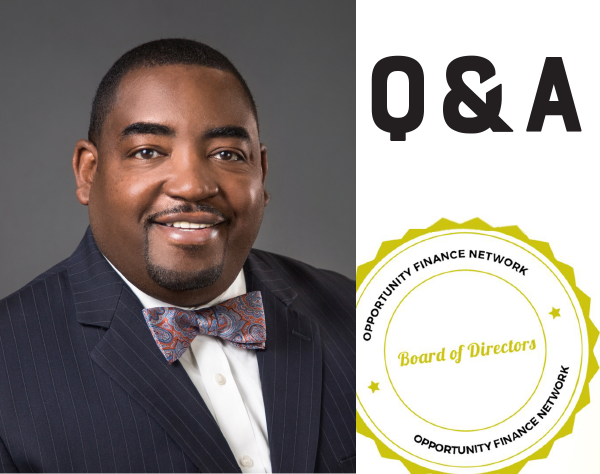
“The next frontier, as I see it, is to figure out a way to attract capital from the larger investment community.”
LAS VEGAS, Oct. 6, 2014 — This is one in a series of interviews with OFN Board candidates in advance of his year’s Board election on Oct. 16 at OFN’s annual conference in Denver.
Today: Brian Maddox, Director of Nevada Operations for Clearinghouse CDFI:
Q: Where does your CDFI work? What regions and communities does it serve?
A: Clearinghouse CDFI currently operates in two states: California and Nevada. I cover the state of Nevada from our Las Vegas office. We provide unmet capital needs throughout the state. This includes both metro and non-metro areas of the state. As real-estate-secured lenders, we finance affordable housing, community centers, commercial retail centers, schools, hospitals, and faith-based facilities.
Q: What’s “different” about your CDFI? Does it operate under special circumstances, does it fill a particular niche, does it have any unusual or innovative programming?
A: We bridge the financing gap between conventional lenders and the needs of low-income and distressed communities. We are uniquely suited to meet the needs of Nevadans. Very few CDFIs are in the marketplace, and our lending limit of $5 million allows us to finance larger, more impactful projects. As one of a select few CDFIs offering Bond financing through the U.S. Treasury Department’s CDFI Fund Bond Guarantee Program, we are excited to finance long-term, fixed-rate loans for projects that create jobs and services and transform distressed communities.
Q: What drew you personally to the industry? What keeps you here? How does your background inform your work?
A: Much of my professional career has involved community-level lending, whether it was with CDCs, banks, or in government. What pulled me into CDFIs in particular was that I was working for a bank and made an investment in Idaho Nevada CDFI, which does primarily mortgage lending on affordable-housing work. That investment just opened my eyes to the possibilities CDFIs create, both in terms of their community impact and the opportunities they present investors.
Q: What have you learned during your time as a CDFI practitioner?
A: As an industry, CDFIs have an outstanding track record of success in terms of repayment and default rates. During the economic downturn a few short years ago, many CDFIs proved to be tried-and-true investments with solid portfolios. CDFIs are typically closer to their borrowers and do an exceptional job underwriting each project individually. This helps our defaults remain low compared to the financing industry as a whole. I believe that it is one of the stories that needs to be told more often.
Q: Are there policy issues you’re especially interested in?
A: Yes, I’d like policymakers to develop a better understanding of “patient capital,” and part of the solution there is to help figure out a way, maybe through policymaking, to get long-term, patient capital into the hands of smaller CDFIs.
Q: What major challenges or opportunities do you see facing CDFIs nationally? What sort of progress would you like to see across the CDFI industry as a whole over the next few years?
A: The next frontier, as I see it, is to figure out a way to attract a stable source of capital from the larger investment community to benefit both small and large CDFIs. I believe the industry needs to tell its story and make an economic case to attract capital from the insurance industry, for instance, which has abundant resources for investment. Similarly, I believe that Wall Street hedge funds and institutional investors are another key source of untapped capital.
Q: If you were to join OFN’s board, what would you advocate, what in particular would you promote?
A: One of the hurdles CDFIs face in terms of attracting more capital is that potential investors don’t always understand the business model, and they sometimes think it’s a riskier investment than it really is. I would advocate for adopting common standards, common nomenclature across the industry, to help everyone understand how to play in this arena.
This interview content condensed and edited © 2014 OFN CDFI Connect.
###
